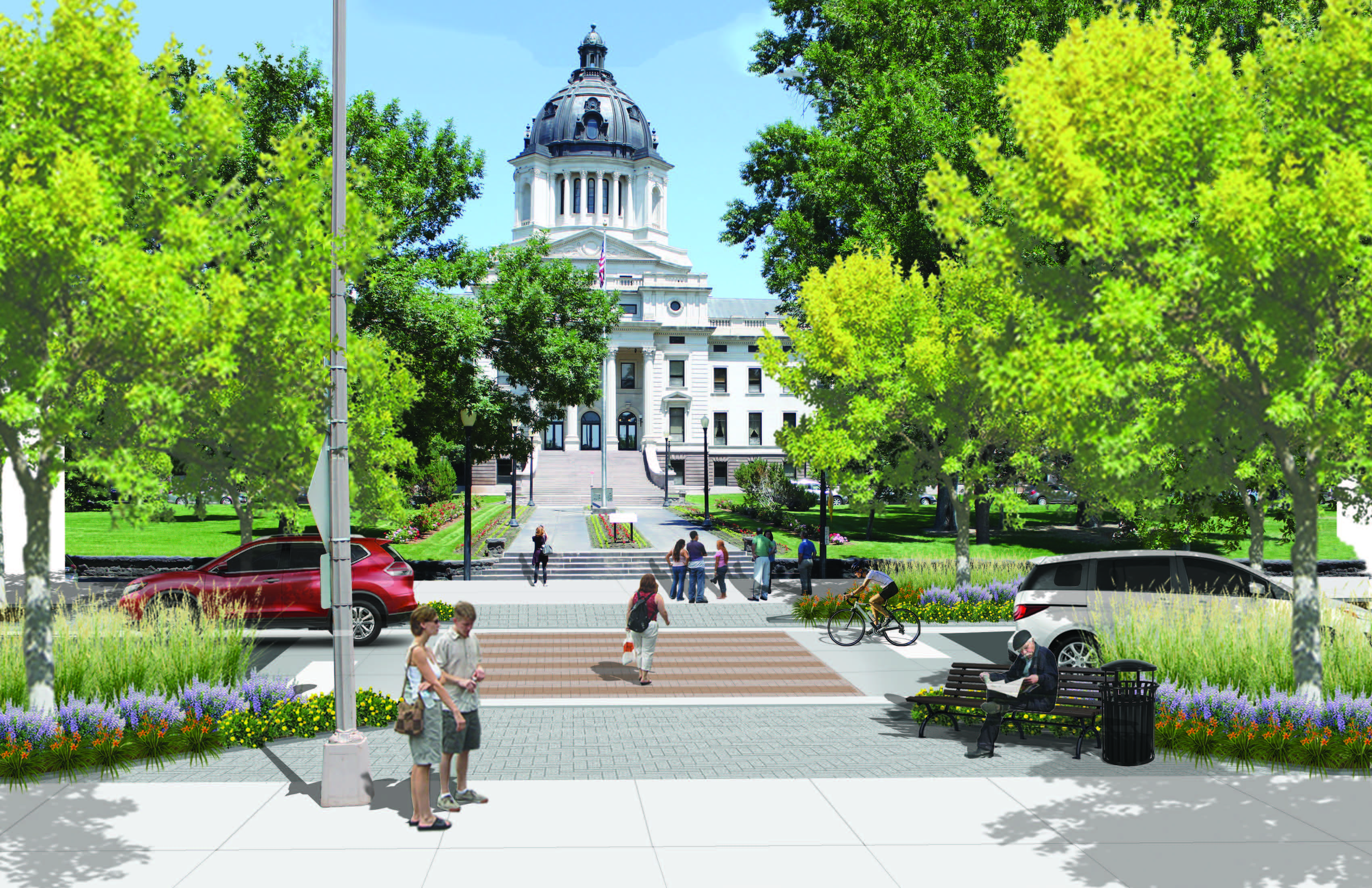The Governors’ Trail connects the state capitol campus, through the downtown commercial core, to the Missouri River waterfront. It is named “Governors’ Trail” because a series of bronze, life-size statues of former South Dakota governors have been placed along the two streets that make the trail—East Capitol Avenue and South Pierre Street. Stockwell was selected to incorporate green infrastructure elements (landscape elements that collect and treat stormwater runoff) along this trail, better connect the state capitol campus to the riverfront, and enhance the downtown commercial corridor.
The design envisions the Governors’ Trail as a green and complete corridor that is more pedestrian and bicyclist friendly, better connects local destinations, supports downtown businesses, and manages its own stormwater. A “complete street” aims to be both a great public space and a street that is shared by all users, including pedestrians, bicyclists, and transit riders, as well as, but not dominated by, drivers. Secondly, the street must perform in a way that is sensitive to the environment. This step is achieved by incorporating green infrastructure in the form of rain gardens, permeable paving, street trees, and stormwater planters that mimic the natural environment by capturing and cleaning polluted stormwater and letting it absorb into the ground (a process known as “bioretention”) rather than flowing untreated into the Missouri River.
The design team worked with city staff, local business owners, government officials, residents, and other stakeholders to assess the existing conditions of the corridor and develop design options to create a strong connection with the state capitol campus and downtown Pierre. Community concerns centered on lack of adequate pedestrian facilities, lack of street trees, lack of bicycle facilities, minimal connection from the state capitol campus to downtown, and no vision for the Missouri River waterfront. The final designs envisioned, developed, and refined by the design team and stakeholders address the community concerns through wider sidewalks, narrower traffic lanes, pedestrian signage, designated shared use bicycle lanes, street trees, stormwater planters, permeable paving, and a more attractive and accessible waterfront.






